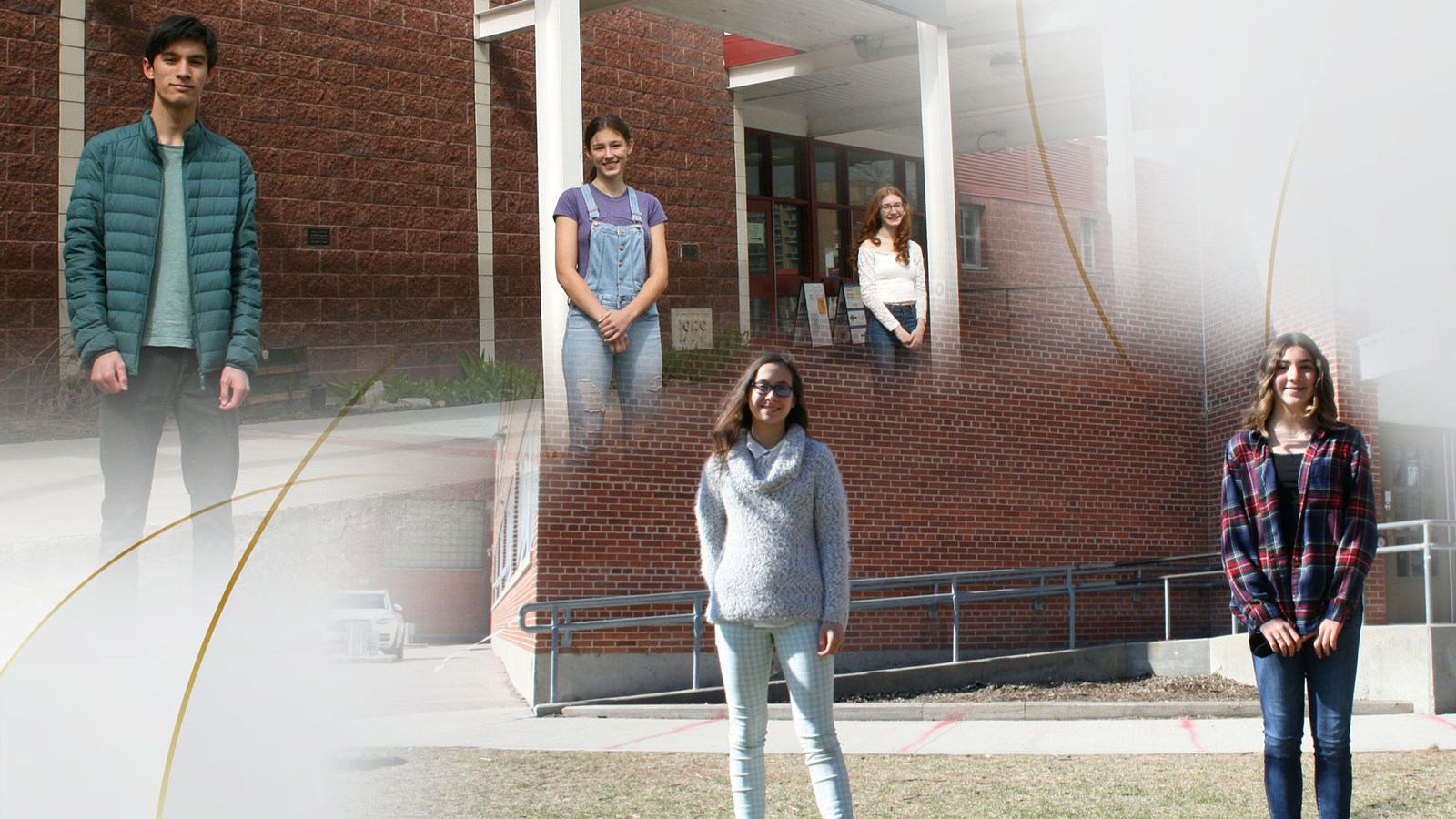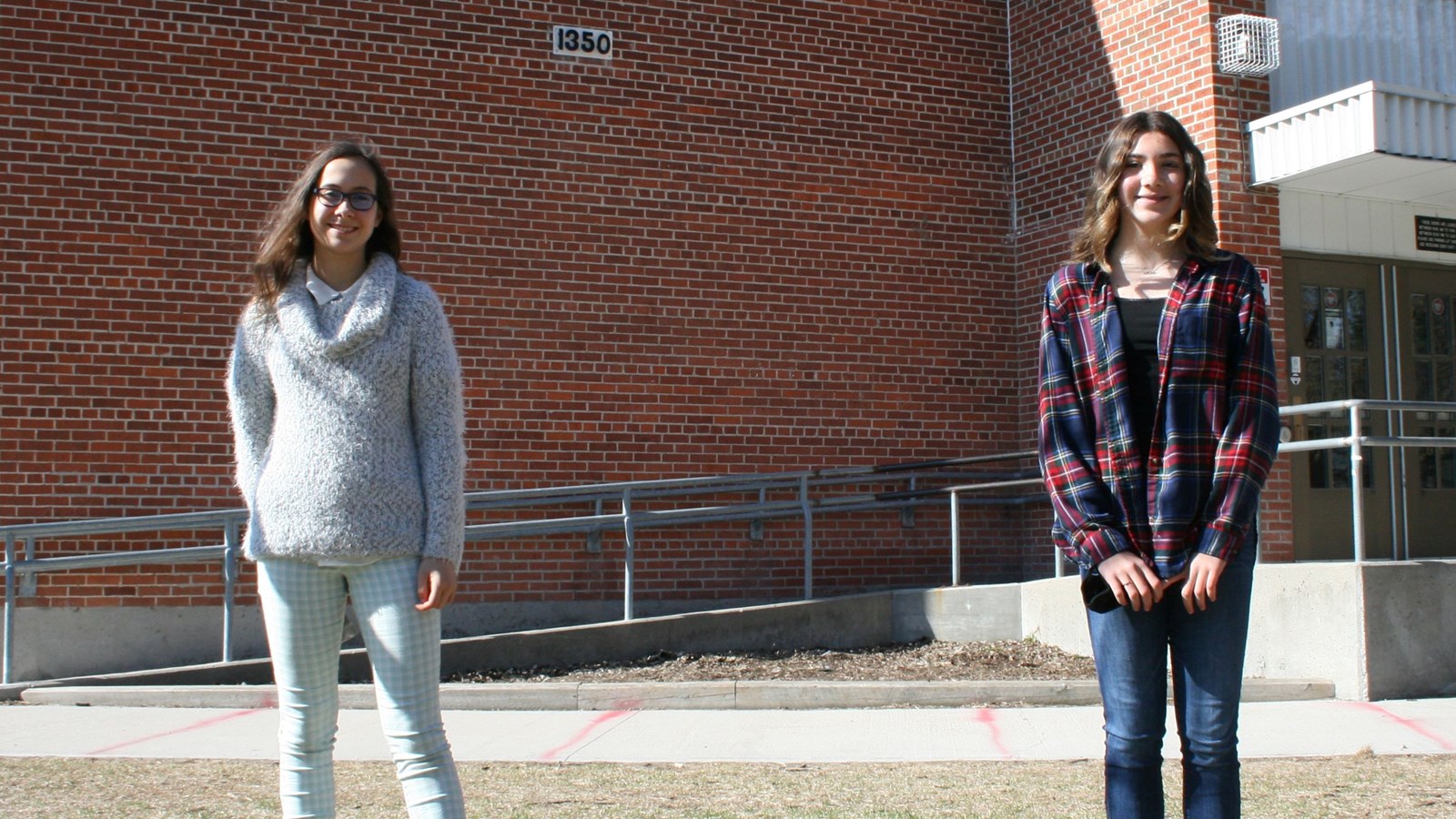WSD students win at Winnipeg Schools’ Science Fair
May 7, 2021
Student scientists from Grant Park High School and École River Heights School were successful at this year’s Winnipeg Schools’ Science Fair.
A virtual version of the annual event was held on April 14. Eight schools and over 80 students from Grades 7 to 12 participated in the contest. The students used an online platform called ProjectBoard to present their projects, while judging was done via Google Meet.
Winnipeg School Division winners included Grant Park students Graydon Strachan, Carlynn Davidson and Cassidy Vieira and River Heights students Emma-Flore Ghia and Emma Thompson.
Thompson, a Grade 8 student, presented a project called Sunscreen vs. Plants. Knowing that certain sunscreen ingredients can damage coral reefs, Thompson wanted to find out if sunscreen had a similar effect on freshwater plants.
For her experiment, Thompson took freshwater from Shoal Lake and bought some freshwater plants from a local store. She put the water and plants into 15 separate containers and added different amounts of sunscreen, measuring the height and weight of each plant over three months.
“In my experiment, I found that sunscreen turned the plants brown and some of them even broke off, while the plants that didn’t get sunscreen were healthy,” Thompson said.
“It was a small experiment. I’d like to look at how it affects plants in the natural environment in a heavy sunscreen-use area.”
Thompson said it’s important that people choose sunscreens that don’t contain oxybenzone or octinoxate before taking a dip in the lake this summer.
“A little thing like changing your sunscreen can help,” Thompson said.
Ghia’s project is titled S.O.S, code Morse en détresse. The Grade 8 student had two questions: If Samuel Morse, the inventor of the telegraph, came up with Morse code in 2021, would it look the same? Also, if Morse spoke French instead of English, would Morse code be different?
“I found that no, Morse code wouldn’t be different if it was created today because English has not changed enough for there to be significant differences,” Ghia said.
“But, when I compared the English frequency to the French frequency, there were very big differences, so there would have definitely been major differences in Morse code if it had been created by a French person.”
Vieira, a Grade 8 student, presented a project titled My Hands are Clean: True or False? which tested the effectiveness of various hand sanitizers.
“To test them I used a zone of inhibition test, which is when you take a sample of the product and you put it into the centre of an agar plate, which has been spread with bacteria,” Vieira said. “I used E. coli, a gram-negative bacterium, and Bacillus megaterium, a gram-positive bacterium.”
“In the end I found that liquid hand sanitizers were better than gel hand sanitizers. I also tested an antibacterial hand wash that had the best results. Washing your hands is the best.”
Davidson, a Grade 11 student, presented a project called Examining the Correlation Between Extracellular Vesicles and Aging.
“Age-associated comorbidities place a significant strain on the healthcare system, both from a health and an economic standpoint,” Davidson said.
The burden of aging is expected to increase with the rising aging population, so it’s therefore necessary to gain a deeper understanding of the mechanisms underlying the aging process in order to design therapeutic interventions to treat diseases, particularly metabolic diseases brought on by aging.”
Davidson conducted a narrative literature review to examine the correlation between extracellular vesicles (EVs) and age.
“I found that with age, there is an increase in extracellular vesicle concentration and there are variations in their cargo,” Davidson said. “Younger EVs expressed higher levels of mitochondrial DNA and anti-inflammatory cytokines and proteins.”
“In general terms, possible approaches for therapeutics could include engineering EVs to contain therapeutic cargo or infusing young EVs into older patients.”
Strachan, a Grade 11 student, created a weather prediction model with his project, Machine Learning-based Weather Cell Temperature Prediction.
“Currently, most of the ways we predict weather are reliant on super computers, which have immensely capable computing abilities, but I wanted to find if there was a way that would take less computational power,” Strachan said.
“The way I did that was by sourcing data collected by Environment Canada. I took some of their weather station data and I used that data to create a neural network. I partitioned Canada into different regions and I was able to create temperature mappings of particular region. I used the temperature mappings to predict future temperatures in that region.”
Strachan said he was able to generate a model that could predict temperatures in a particular region over the course of a day with 88 percent accuracy.
The five young scientists will represent WSD at the upcoming virtual Canada-Wide Science Fair, which takes place May 17 to 21.


